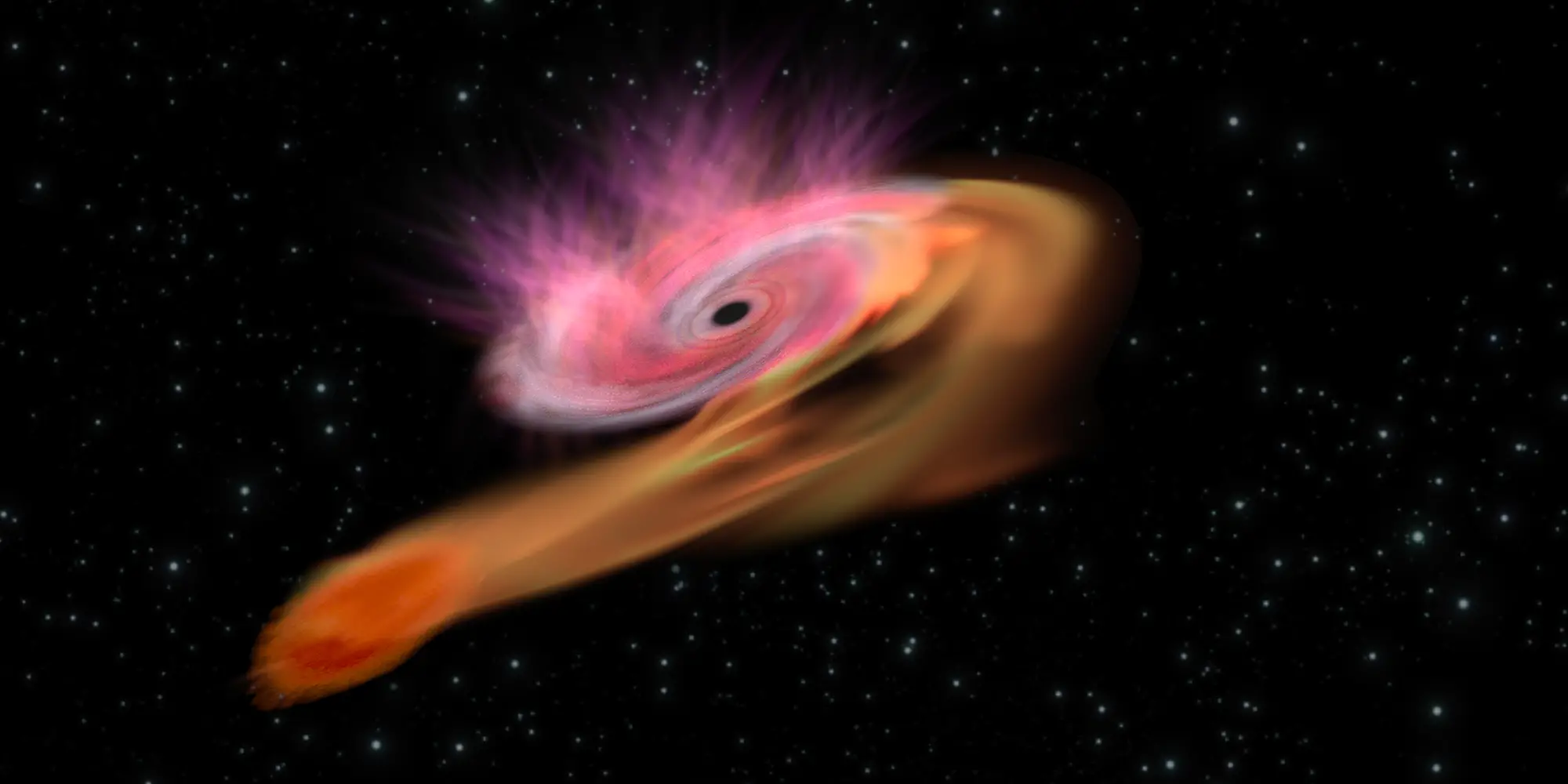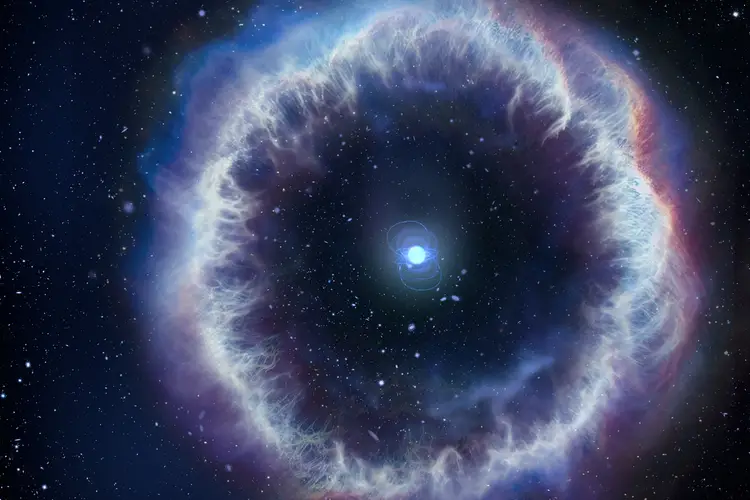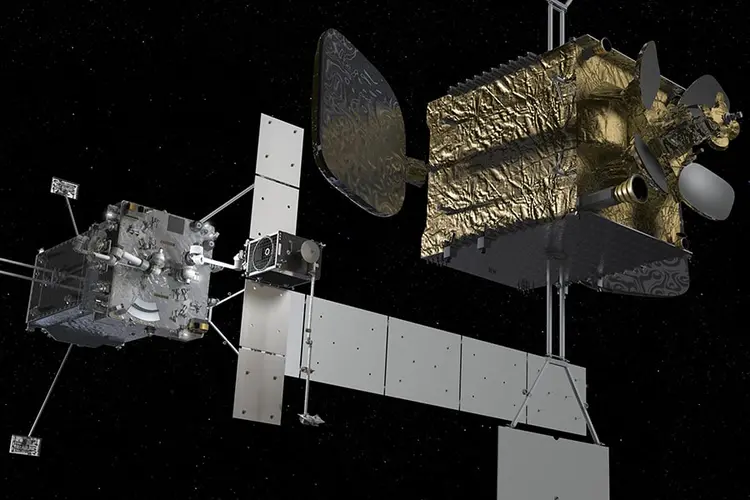
Shredded Star Launches Powerful Jet Toward Earth
New study characterizes peculiar high-energy transient as a rare jetted tidal disruption event.
Media Inquiries
Three months after its launch, the Einstein Probe detected an unusual event unlike anything other X-ray probes had seen before. Now, a new study led by Carnegie Mellon University suggests that the powerful burst of high-energy radiation was either a rare jetted tidal disruption event or, perhaps, an entirely new type of astronomical phenomenon.
The findings, published in The Astrophysical Journal Letters(opens in new window), are the culmination of an expansive analysis of the unusual high-energy transient event — termed EP240408a — across multiple wavelengths including ultraviolet, optical, near-infrared, radio, X-ray and gamma ray.
“EP240408a ticks some of the boxes for several different kinds of phenomena, but it doesn’t tick all of the boxes for anything,” said Brendan O'Connor, a McWilliams postdoctoral fellow at Carnegie Mellon’s McWilliams Center for Cosmology and Astrophysics(opens in new window) and lead author of the study.
High-energy transients are brief bursts of high-energy radiation detected within or outside of our galaxy. Most are often determined to be gamma-ray bursts. In EP240408a’s case, its properties are distinct from any previously known high-energy transient.
In addition to being detected by the Einstein Probe, follow-up observations with the Neutron star Interior Composition Explorer (NICER) and the Neil Gehrels Swift Observatory revealed a fading X-ray transient. The X-ray behavior was unprecedented, falling in an intermediate regime of both duration and luminosity where other transients had not been observed, which provided a crucial hint toward its origin.
However, it was not detected by the Very Large Array, a radio astronomy observatory operated by the U.S. National Science Foundation. Observations from the Very Large Array at 11 days, 158 days and 258 days after EP240408a’s initial discovery indicated no radio emission from the source.
“When we see something this bright for this long in X-rays, it usually has an extremely luminous radio counterpart,” O’Connor said. “And here we see nothing, which is very peculiar.”
After methodically eliminating a number of other potential explanations including active galactic nuclei, fast blue optical transients, fast X-ray transients and other variations of previously characterized phenomena, O’Connor and his co-authors concluded that EP240408a is extragalactic in origin and is most likely a relativistically-jetted tidal disruption event.
Tidal disruption events (TDEs) occur when a star is shredded by a nearby black hole; these events are themselves rare, with fewer than 100 discovered so far. In even more rare cases, the black hole’s powerful tidal forces propel some of the shredded stellar material outward in high-velocity jets, which then interact with nearby clouds of dust and gas and shine brightly in X-ray and radio. Thus far, only four TDEs are known to have relativistic-velocity jets associated with them.
O’Connor said that the current lack of radio emissions is pivotal, but that follow-up observations in radio wavelengths will hopefully yield future detections as the material within the jets slows down to energies corresponding to radio frequencies — a process expected to occur on timescales of roughly 1,000 days. Thus, follow-up radio observations with the Very Large Array (VLA) will be imperative.
EP240408a appears to be giving astronomers a glimpse of a high-energy transient’s signal after its initial X-ray outburst but before its relativistic-speed jets flares in the radio band.
“It seems to me that this is the most likely explanation for why we aren’t seeing radio emission. Hopefully, eventually, we will see a jet at radio wavelengths, either with the current setup of the VLA or the Next Generation VLA, and we can monitor it for years to come in order to learn even more about this explosion,” O’Connor said.
An international team of astronomers were involved with the work, including Igor Andreoni at the University of North Carolina at Chapel Hill, Dheeraj Pasham at MIT, and Jeremy Hare at the Catholic University of America, plus several from Carnegie Mellon: Assistant Professor of Physics Antonella Palmese, postdoctoral research associate Lei Hu and Department of Physics graduate students Tomás Cabrera and Keerthi Kunnumkai.
Data from several observatories, including NuSTAR, NICER, Swift, Gemini, Keck, DECam, VLA and ATCA, were used in the study.


